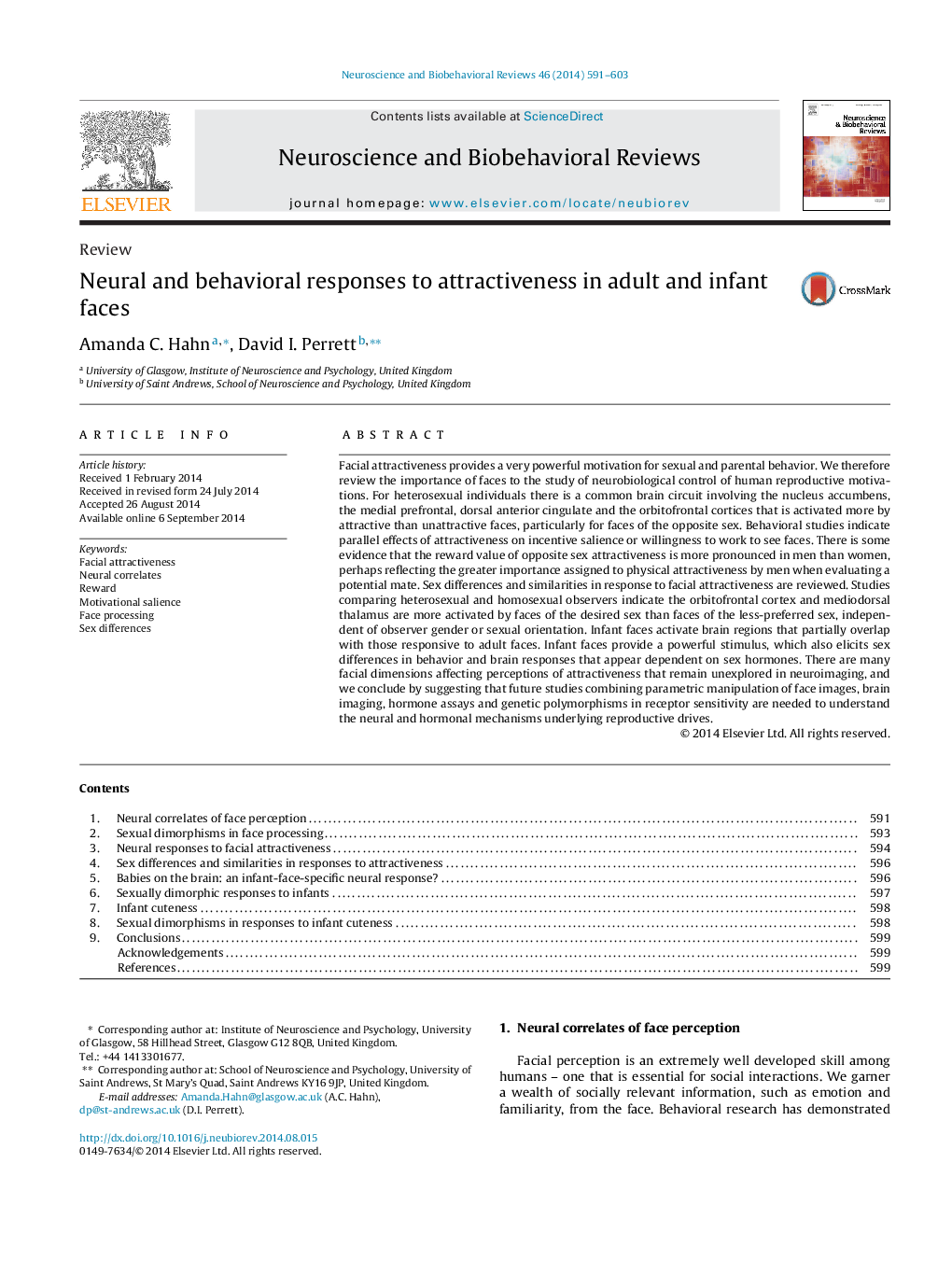| کد مقاله | کد نشریه | سال انتشار | مقاله انگلیسی | نسخه تمام متن |
|---|---|---|---|---|
| 937447 | 924485 | 2014 | 13 صفحه PDF | دانلود رایگان |
• We review the current understanding of face processing, including evidence from multiple imaging techniques.
• We discuss incorporating perceptions of facial attractiveness into the current model of face processing.
• Neural and behavioral responses to attractiveness in both adult and infant faces are reviewed.
• We argue that a unified reproductive drive could be affecting responses to attractiveness.
Facial attractiveness provides a very powerful motivation for sexual and parental behavior. We therefore review the importance of faces to the study of neurobiological control of human reproductive motivations. For heterosexual individuals there is a common brain circuit involving the nucleus accumbens, the medial prefrontal, dorsal anterior cingulate and the orbitofrontal cortices that is activated more by attractive than unattractive faces, particularly for faces of the opposite sex. Behavioral studies indicate parallel effects of attractiveness on incentive salience or willingness to work to see faces. There is some evidence that the reward value of opposite sex attractiveness is more pronounced in men than women, perhaps reflecting the greater importance assigned to physical attractiveness by men when evaluating a potential mate. Sex differences and similarities in response to facial attractiveness are reviewed. Studies comparing heterosexual and homosexual observers indicate the orbitofrontal cortex and mediodorsal thalamus are more activated by faces of the desired sex than faces of the less-preferred sex, independent of observer gender or sexual orientation. Infant faces activate brain regions that partially overlap with those responsive to adult faces. Infant faces provide a powerful stimulus, which also elicits sex differences in behavior and brain responses that appear dependent on sex hormones. There are many facial dimensions affecting perceptions of attractiveness that remain unexplored in neuroimaging, and we conclude by suggesting that future studies combining parametric manipulation of face images, brain imaging, hormone assays and genetic polymorphisms in receptor sensitivity are needed to understand the neural and hormonal mechanisms underlying reproductive drives.
Journal: Neuroscience & Biobehavioral Reviews - Volume 46, Part 4, October 2014, Pages 591–603
